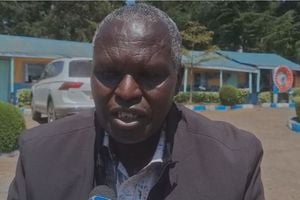Telemedicine will improve healthcare

Ponea Health Africa has incorporated an online wallet for companies and corporates which acts as an alternative to insurance covers, at affordable prices.
Kenya is experiencing an acute medical practitioner shortage. Kenya National Bureau of Statistics statistics show there are only 19 doctors for every 100,000 people. This results in a doctor-patient ratio of 1:5,263, far from the World Health Organization-recommended 1:1,000.
This exacerbates the disparities in healthcare access and delivery. A Kenya Institute for Public Policy Research and Analysis (Kippra) study reveals significant disparities in the availability of healthcare infrastructure, healthcare worker distribution and medical equipment and consumables. Inequitable access is caused by a variety of factors, including geographic challenges and income disparities.
With the growing population, there is an urgent need to seal the gaps. One option is through technology, which has advanced by leaps and bounds over the past decades, making cybercommuting a viable option. Consider how many people, particularly since the outbreak of Covid-19, live in Kenya while working for employers based abroad; why can’t the same be true for medical professionals?
Telemedicine is one of the most accessible tools for increasing reach and lowering costs. Advances in medical equipment, video conferencing and internet access are making it faster and more affordable to send data across the country. The increasing availability and speed of broadband and mobile internet mean data is moving faster than ever before, allowing real time transfer of high-definition video.
Enhanced data transfer
For instance, by leveraging enhanced data transfer capabilities and specialised instruments to measure various vital functions, Gertrude’s Children’s Hospital has been able to provide specialised paediatric care to over 10,000 children across five counties as part of the Daktari Smart programme, a collaboration between the Gertrude’s Hospital Foundation and the M-Pesa Foundation.
However, to expand such a project to reach, say, more than five million children over the next few years, a multi-stakeholder approach is necessary. Among the most critical aspects, finances top the list of the important issues that must be addressed.
As the government’s universal health coverage (UHC) plan dominates public discourse, it is critical to consider ways to incorporate telemedicine into initiatives like the Social Health Insurance Fund (Shif). That will necessitate policy-level answers to questions such as how telemedicine consultation fees are determined and who pays for them. Fortunately, the Ministry of Health is considering such concerns and has held robust stakeholder engagements, including discussions about the launch and expansion of telemedicine programmes.
Human capital
Physical infrastructure and human capital capacity are two other factors to consider.
Multi-stakeholder investment in health technology, particularly telemedicine, is a viable and cost-effective strategy for increasing healthcare access. Healthcare industry stakeholders must consider what financing, training and service delivery might look like in the 21st Century, as well as incorporate technological interventions to effectively bridge distances and connect people to the needed care.
Dr Nyarango is the CEO of Gertrude’s Children’s Hospital. [email protected].




